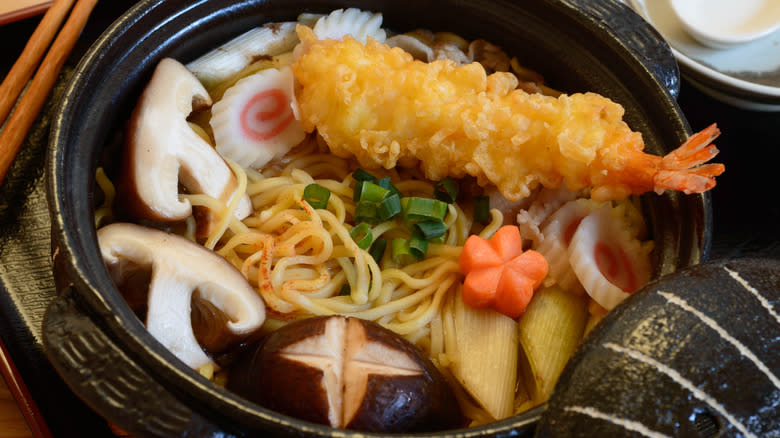Dust Tekka Powder Over Your Finished Dish For An Instant Umami Boost

Good cooks have a set of seasonings they lean on to amp up the flavor as they cook. For example, adding salt and acid to balance fat-heavy foods or sugar to counter too much acidity in tomato sauce can create flavor balance. Umami is another flavor chefs and cooks use to increase the depth of flavor. Roughly translated from Japanese as "savory", umami flavors arise from the presence of amino acids, such as glutamic acid that naturally occur in foods like tomatoes, mushrooms, Parmesan cheese, and soy sauce. Although umami-rich ingredients have their own distinctive flavors, the presence of glutamic acid triggers taste receptors that enhance the other flavors present. It's handy to keep umami-rich ingredients in your pantry to add a final boost of umami flavor. One you may not know already is tekka powder.
Tekka was created as a way to balance macrobiotic diets, adding nutrients that might be missing in the restrictive eating protocol. It's made by cooking highly nutrient-dense vegetables like carrot, burdock, and lotus root with aged red miso paste for many hours in an iron pot. The word is a contraction of the Japanese words for iron pot and fire, reflecting its traditional production method.
Read more: Vinegar Cooking Hacks You'll Wish You Knew Sooner
Just A Touch Of Tekka Is All You Need

The distinctive miso that is used for tekka powder is called hatcho miso, made from traditional red miso paste that is aged for a minimum of two years. Hatcho contains only soybeans, no grains like some other miso pastes do, and the aging process makes it less sweet than the more familiar white miso paste. Hatcho is also more umami-packed, making it the best choice for tekka powder. Long cooking with the other ingredients creates a crumbly, dry mixture with very strong flavors.
Tekka powder is considered a seasoning, like salt or herbs, and as such, it's a supporting flavor. Just a small dusting is enough to add concentrated flavor to cooked grains or vegetable dishes. It's delicious on any food that could use a boost of umami to enhance the natural flavor, like grilled mackerel or brown rice. Tekka powder might just be your favorite secret ramen hack, too. The salt content in tekka comes from the concentrated miso, so gram for gram, it's a little higher in sodium than other seasonings like furikake while adding intense umami and a mineral taste. Look for pouches of tekka powder at your local Asian grocery. It might be hard to source but once you've tasted a sprinkle, you'll know it was worth the hunt!
Read the original article on Tasting Table.

